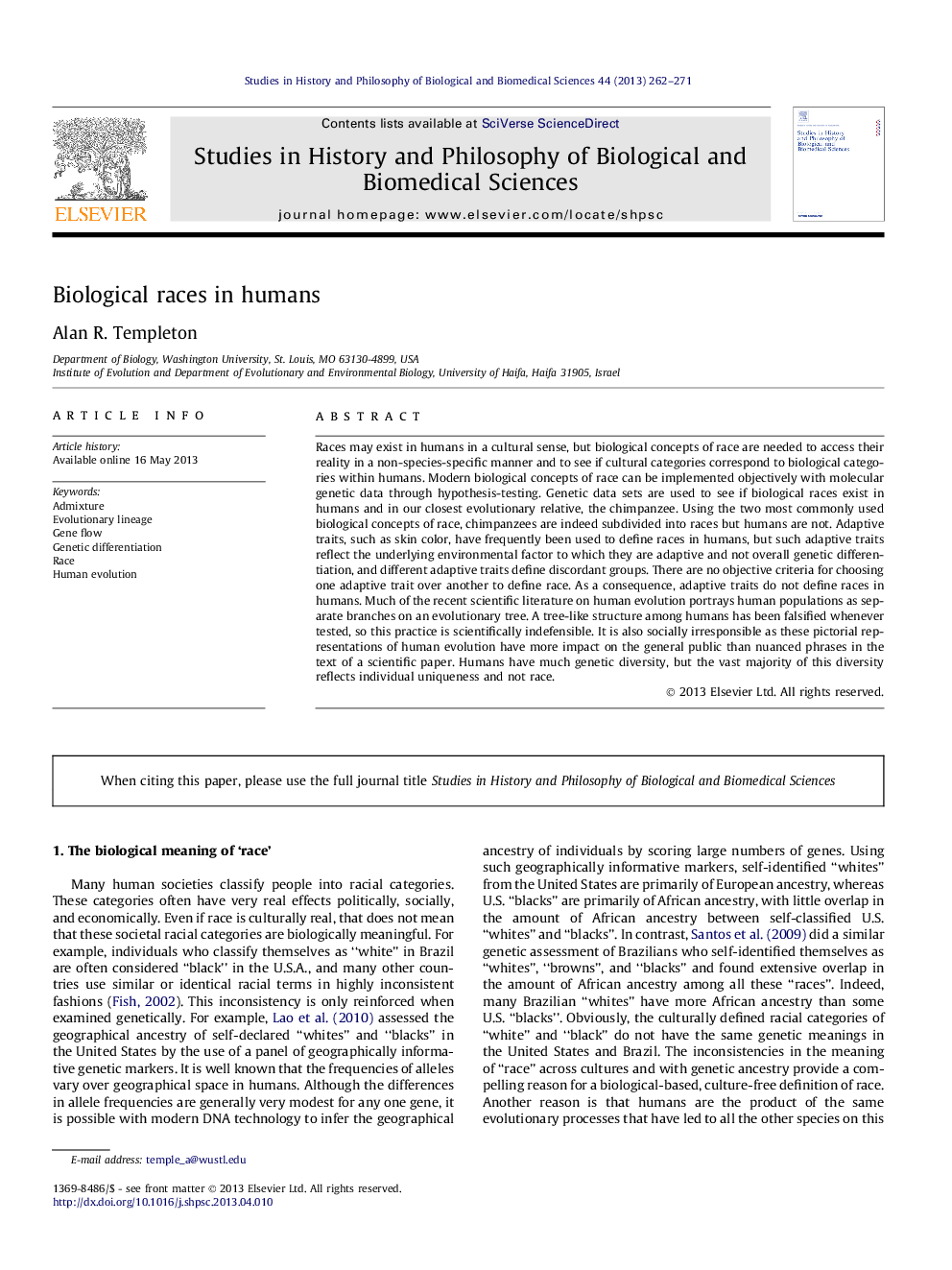| کد مقاله | کد نشریه | سال انتشار | مقاله انگلیسی | نسخه تمام متن |
|---|---|---|---|---|
| 1161752 | 1490525 | 2013 | 10 صفحه PDF | دانلود رایگان |

• Races are highly genetically differentiated populations with sharp geographical boundaries.
• Alternatively, races can be distinct evolutionary lineages within a species.
• By either definition, races do not exist in humans but do exist in chimpanzees.
• Adaptive traits such as skin color do not define races and are often discordant with one another.
• Humans populations are interwoven by genetic interchanges; there is no tree of populations.
Races may exist in humans in a cultural sense, but biological concepts of race are needed to access their reality in a non-species-specific manner and to see if cultural categories correspond to biological categories within humans. Modern biological concepts of race can be implemented objectively with molecular genetic data through hypothesis-testing. Genetic data sets are used to see if biological races exist in humans and in our closest evolutionary relative, the chimpanzee. Using the two most commonly used biological concepts of race, chimpanzees are indeed subdivided into races but humans are not. Adaptive traits, such as skin color, have frequently been used to define races in humans, but such adaptive traits reflect the underlying environmental factor to which they are adaptive and not overall genetic differentiation, and different adaptive traits define discordant groups. There are no objective criteria for choosing one adaptive trait over another to define race. As a consequence, adaptive traits do not define races in humans. Much of the recent scientific literature on human evolution portrays human populations as separate branches on an evolutionary tree. A tree-like structure among humans has been falsified whenever tested, so this practice is scientifically indefensible. It is also socially irresponsible as these pictorial representations of human evolution have more impact on the general public than nuanced phrases in the text of a scientific paper. Humans have much genetic diversity, but the vast majority of this diversity reflects individual uniqueness and not race.
Journal: Studies in History and Philosophy of Science Part C: Studies in History and Philosophy of Biological and Biomedical Sciences - Volume 44, Issue 3, September 2013, Pages 262–271